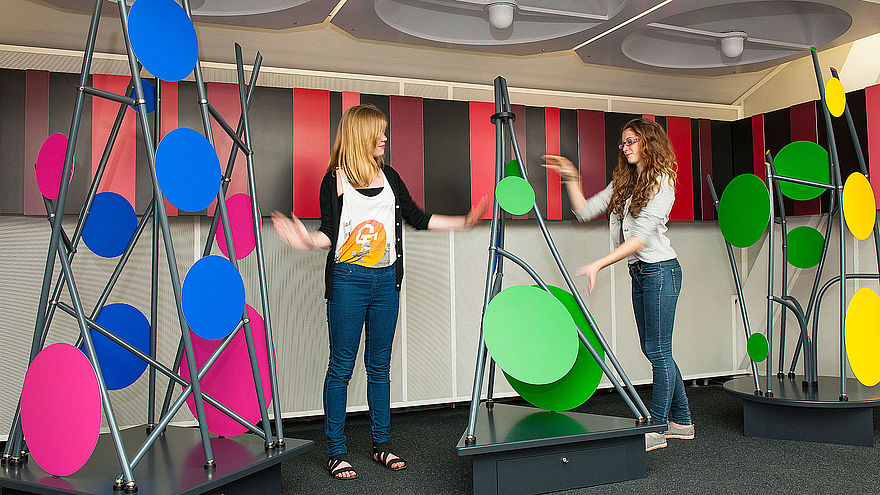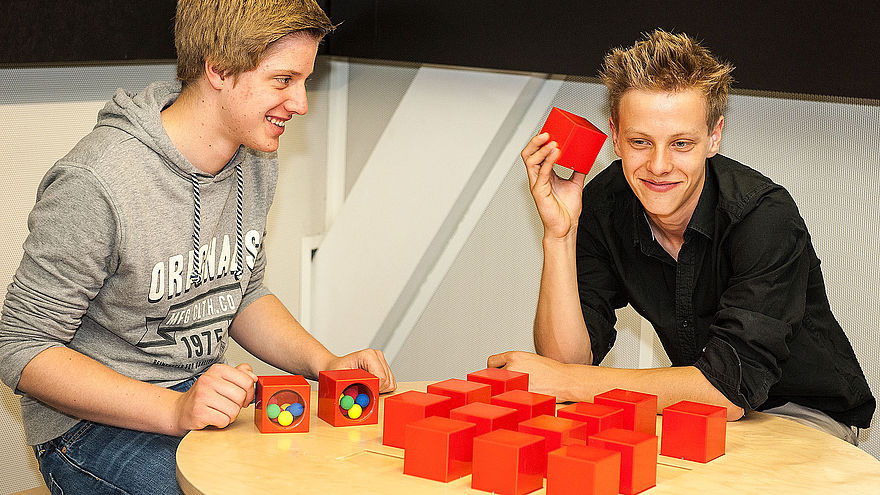From Sound to Music
Come play our sound matching memory game, or try out our speaking tube! Create your own music on the Trautonium, compose a melody on the infinite musical scale, or explore the sounds produced by various resonating chambers.

SDTB / C. Kirchner
Noises, Sounds, and Tones
When acoustic vibrations reach the human ear, they can be perceived very differently. Depending on their modes of vibration, they can sound like a bang, a noise, a sound, or a tone. Irregular vibrations from an object being struck or from a rush of air are heard as noise. Regular vibrations from a flute or a guitar string are heard at a certain pitch and with a timbre that is distinctive of the instrument. In this case, several tones sound at once. A clear, pure tone can be produced with a tuning fork. Such vibrations are sinusoidal.

SDTB / C. Kirchner
Music
Music has a lot to do with physics. This can be seen clearly in electronic music, for example. Tones can be created using electronic circuits or digital technology. Electronic musical instruments range from the historic Dynamophone, to the etherphone and the Trautonium, all the way to the modern synthesizer and beyond.

SDTB / C. Kirchner
Sound
People perceive sound differently. We hear it as loud or quiet, pleasant or unpleasant, or as coming from a specific direction. In order to speak to each other, we have to be able to perceive certain pitches as loud or quiet. This seems obvious, but it is the result of complex physical phenomena. Come explore a few of them here in this section.

SDTB / U. Steinert

